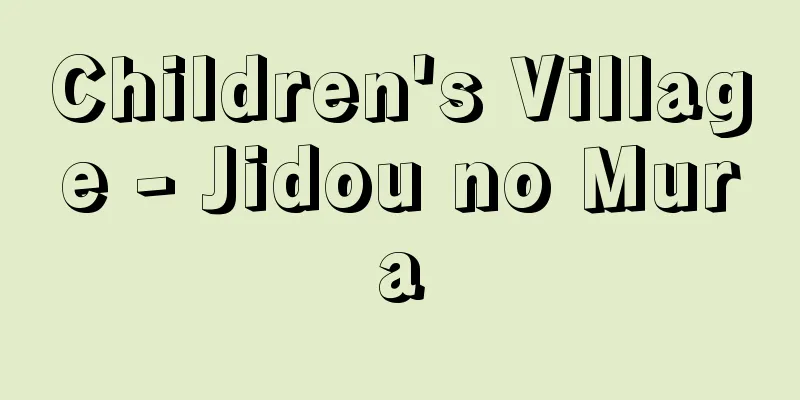Patriotic Enlightenment Movement - Aikoku Keimou Undou

|
A national salvation movement in the late Joseon Dynasty (when the country was renamed the Korean Empire in 1897). In November 1905, after the end of the Russo-Japanese War, Japan, with the approval of Russia, the United States, and the United Kingdom, forced Korea into a "protectorate treaty," and thereafter strengthened its rule through the Resident-General in Seoul. In response, Korean patriots launched various anti-Japanese national salvation movements. The main ones were the guerrilla-style volunteer army movement and the legal patriotic enlightenment movement. The latter was a movement by intellectuals in the fields of journalism and education, such as Yun Hyo-jeong, Jang Ji-yeon, and Park Un-sik, who believed that in order to restore national sovereignty it was necessary to cultivate patriotism and ability through the promotion of education and industry, and so they established private schools in every corner of the country and organized organizations such as the Daehan Ji-gyanghoe, the Northwestern Society, and the Women's Education Association, in an effort to raise the nation's patriotism and enthusiasm for education. The Resident-General and its puppet government strengthened restrictions on this movement with laws such as the Society Act and the Private School Act, and further banned these organizations when Korea was annexed in August 1910, causing the movement to fail. [Yozo Taguchi] "Korean Enlightenment Thoughts" by Kang Jae-hyeon (1980, Iwanami Shoten) " Park Eun-sik, translated and annotated by Kang Deok-sang, "The Bloody History of the Korean Independence Movement" 2 volumes (Heibonsha, Toyo Bunko)" Source: Shogakukan Encyclopedia Nipponica About Encyclopedia Nipponica Information | Legend |
|
李氏(りし)朝鮮末期(1897年、国号を大韓帝国と改称)の救国運動。日露戦争終結後の1905年11月、日本はロシア、アメリカ、イギリスの承認のもとに朝鮮に「保護条約」を強要して以後、ソウルに置いた統監府を通じて支配を強化していった。これに対して朝鮮の愛国志士たちはさまざまな抗日救国運動を展開した。そのおもなものがゲリラ的な義兵運動と、合法的な愛国啓蒙運動である。後者は、尹孝定(いんこうてい)、張志淵(ちょうしえん)、朴殷植(ぼくいんしょく)ら言論界や教育界の知識人たちが、国権の回復には愛国心の涵養(かんよう)と教育、産業の振興による実力の培養が必要であるとして、全国の津々浦々に私立学校を設立するとともに、大韓自強会、西北学会、女子教育会などの団体を結成して国民の愛国心と教育熱の高揚に努めた運動である。統監府と傀儡(かいらい)化した政府は学会令、私立学校令などでこの運動に対する規制を強め、さらに1910年8月の朝鮮併合と同時にこれらの団体を禁止したため、この運動は挫折(ざせつ)した。 [田口容三] 『姜在彦著『朝鮮の開化思想』(1980・岩波書店)』▽『朴殷植著、姜徳相訳注『朝鮮独立運動の血史』全2巻(平凡社・東洋文庫)』 出典 小学館 日本大百科全書(ニッポニカ)日本大百科全書(ニッポニカ)について 情報 | 凡例 |
Recommend
Psychology and Alchemy
One of the major works by Swiss psychologist and p...
Ikeno
One of the surnames. Source: The Selected Edition ...
Goncourt Brothers - Frères Goncourt
(Brother) Edmond (Louis Antoine Huot) de 26 May 18...
Eakins
American painter, born in Philadelphia. After stud...
Flacourtia jangomas (English name) Flacourtia jangomas
…[Sumihiko Hatsushima]. … *Some of the terminolog...
Special relatives - Special relatives
A person other than an heir who shared the same ho...
Land Tax Reform
The Meiji government implemented a reform of the ...
Esophageal voice
A method for people who have had a larynx removed ...
Morveau, LBGde (English spelling) MorveauLBGde
...Therefore, it is natural that chemists should ...
Maple leaf grass - Maple leaf grass
A perennial plant of the Asteraceae family. The s...
Samoa - Independent State of Samoa
An archipelago nation in Polynesia, in the easter...
Fujiwara Toshinori - Fujiwara no Toshinori
Year of death: 10th April 1167 (30th April 1167) Y...
Intercity Race
…The first recorded full-scale race took place in...
Glaus - Troy Edward Glaus
American professional baseball player (right-hand...
Pensacola (English spelling)
A city in northwest Florida, United States. It is ...









